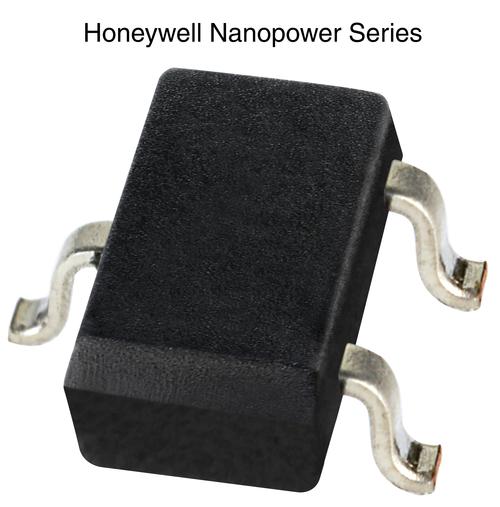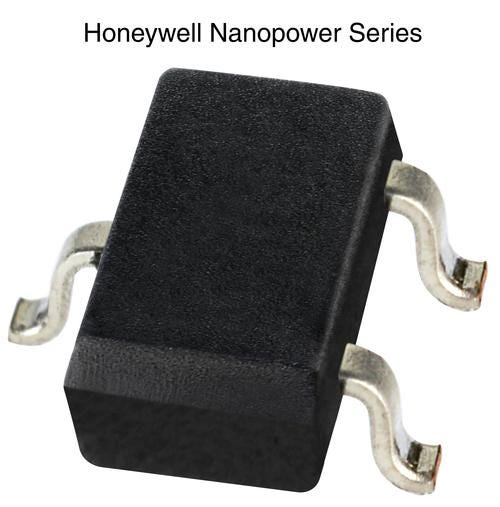May 20, 2014

The industry's first! I haven't heard that one before (well, maybe a few hundred times). Sometimes it's true, and sometimes it's just the propaganda machine. But this time there may be something to it. I listened to the pitch from Honeywell, and they announced a family of nanopower anisotropic magneto-resistive sensor ICs that provides the highest level of magnetic sensitivity (as low as 7 Gauss typical) while requiring just 360 nA.

Two sensitivities are available, both in a subminiature SOT-23 package. The SM351LT operates at 7 Gauss typical operate, 11 Gauss maximum, while the SM353LT operates at 14 Gauss typical and 20 Gauss maximum. When compared to competitive magnetic technologies, these sensors offer design engineers a number of advantages, including smaller size, more durability, and higher reliability. The device is suited for battery-powered applications where previously only reed switches could be used due to very low power requirements and large air gap needs.
The Honeywell devices also compare favorably to Hall-effect sensors, offering higher sensitivity, which provides the ability to sense air gaps 2X the distance of Hall-effect sensors. This can ultimately reduce the cost by allowing for the use of smaller or lower strength magnets, a feature that can become even more important as magnet prices are expected to increase going forward.
When you look at the list of applications that such a device can be used for, you realize the impact that it could have in the market. For example, the list starts with a slew of battery-operated products, like water, gas, and electricity meters, industrial smoke detectors, exercise equipment, security systems, handheld computers and tablets, power tools, and scanners. At the other end of the spectrum are products like white goods (dishwashers, microwaves, washing machines, refrigerators, and coffee machines), and medical equipment, including hospital beds, medication dispensing cabinets, and infusion pumps.
Industry's first? It looks like they may be telling the truth.
Related posts:
About the Author(s)
You May Also Like



